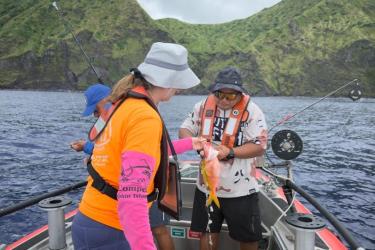Did you know that Hawaiʻi hawksbill sea turtles like to nest in beach vegetation? That giant manta rays are picky about the individuals they socialize with? That oceanic whitetip sharks were once the most abundant sharks in the ocean? How about that these three Pacific Islands species are all listed under the Endangered Species Act (ESA)?
The ESA was signed into law on December 28, 1973. Under the act, the federal government must protect species listed:
- Endangered (those that are in danger of extinction)
- Threatened (those that are likely to become endangered in the foreseeable future)
It must also designate critical habitat for these species—areas that are essential to their conservation—when prudent and determinable. NOAA Fisheries and the U.S. Fish and Wildlife Service implement the act.
The ESA and other federal protections, such as the Marine Mammal Protection Act (MMPA), have helped a number of species recover from the brink of extinction. The Hawaiʻi humpback whale population, for example, has rebounded enough that this population is no longer listed under the ESA. (They’re still protected under the MMPA.)
The Pacific Islands region has many other ESA-listed species that NOAA Fisheries protects in collaboration with other government agencies and non-government partners. Some of the species are well known, such as the Hawaiian monk seal and the green sea turtle, but others fly under the radar. In celebration of the ESA, here are three short videos to help you get to know a few threatened and endangered species you may not be familiar with.
Get to Know Your Pacific Islands Endangered Species
Oceanic Whitetip Sharks
Hawksbill Sea Turtles
Giant Manta Rays



